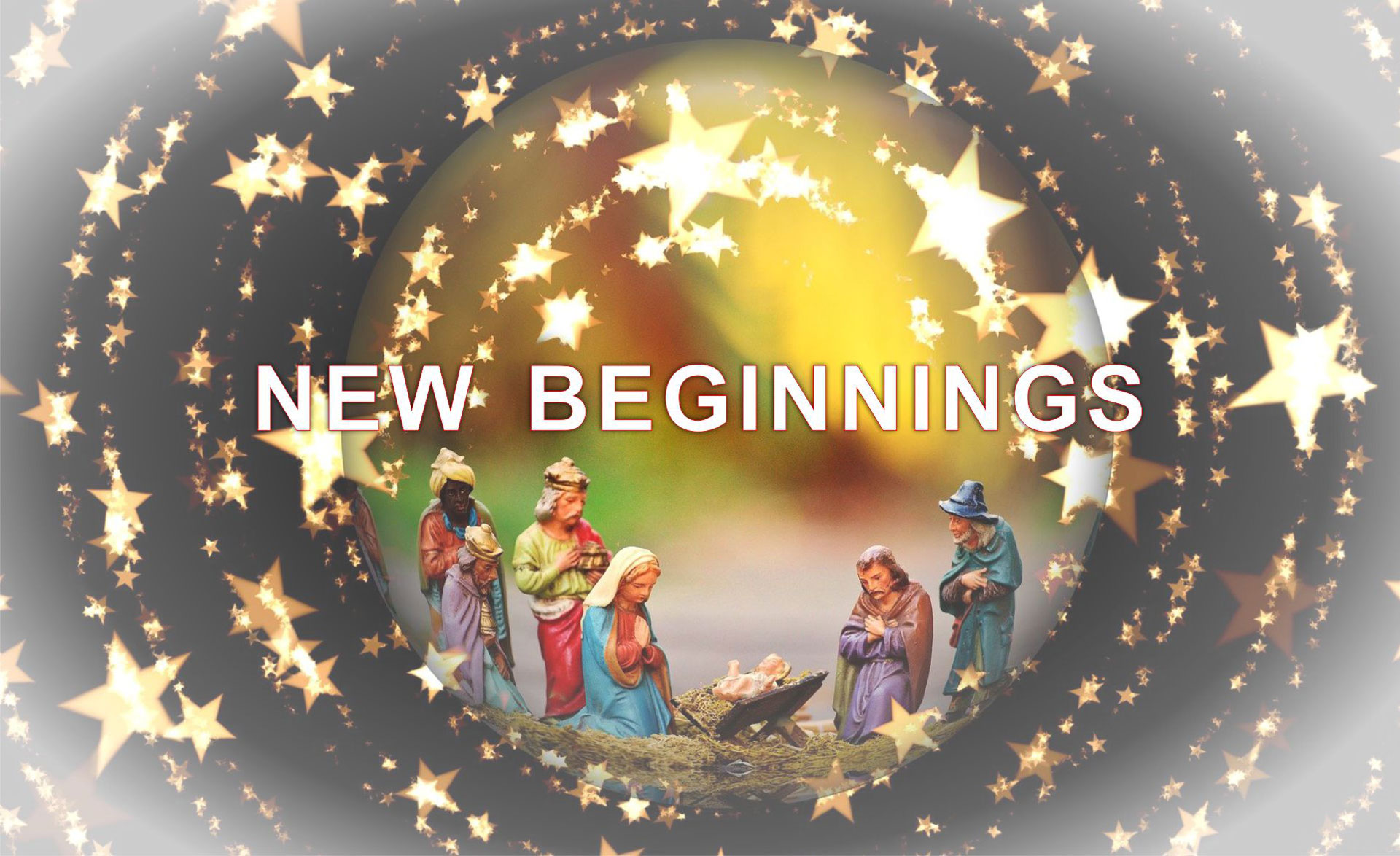Editor: The Revd Canon Derek Earis
Contents
- LETTER FROM A SOON-TO-BE-OCCUPIED VICARAGE by Revd Derek Earis
- CHRISTMAS AND EPIPHANY SERVICES – YORK CITY CENTRE CHURCHES
- HOPE IN TROUBLED TIMES by Revd Canon Dr Malcolm Grundy
- CHRISTMAS QUIZ
- NEW BEGINNINGS: HOPES AND DREAMS by Dorothy Lee, All Saints Pavement
- SANTA WORD SEARCH
- NEW BEGINNINGS: HOPES AND PRAYERS FOR 2021 by Professor Dianne Willcocks, St Denys
- NOTES FROM ST HELEN STONEGATE by Anthony & Margaret Hammersley
- NEW BEGINNINGS: LOOKING FORWARD by Anthony & Margaret Hammersley, St Helen with St Martin
- DONG MERRILY ON HIGH! by Peter Wells
- NEW BEGINNINGS: HOPES AND DREAMS by John Stanton, St Olave’s
- JANUARY – LOOKING BOTH WAYS by Revd Derek Earis
This edition of Touch Base covers two calendar months – December 2020 and January 2021 – and takes us through Advent, Christmas and Epiphany to Candlemas.
LETTER FROM A SOON-TO-BE-OCCUPIED VICARAGE by Revd Derek Earis
Dear Friends,
On December 15th, just ten days before Christmas, we look forward to welcoming Revd Liz Hassall to be our new Priest in charge. It is very much a new beginning in the life of our parishes and coincides with the recent grouping of our four city centre parishes. It is also of course very much a new beginning for her. Do watch out for the details of her licensing and how you can be part of this online. It is a very exciting time for all of us and I’m sure we will do everything we can to help Liz and her family settle in and get to know us. We very much hope they will all enjoy living amongst us and that her ministry here will be a fruitful and a happy one. Huge thanks go to all who have kept things going in the interregnum.
Christmas is itself the supreme time of new beginnings. In St John’s Gospel that familiar final reading at the end of a Carol Service says it all. It starts “In the beginning was the Word” and then draws up to the climax “And the Word was made flesh and dwelt amongst us”. This coming of the “Word made flesh” brings a new beginning to a tired and confused world and enables us to see God made man and enables us to enter into the joy of the Incarnation. You will find details of our Christmas and Epiphany services (as far as we are able to give them at present) below. Do follow them online or come to the live ones if this is possible. I hope you enjoy the photo of the new Crib figures at All Saints Pavement (see below). The Crib figures have been purchased by kind donations and the stable has been repainted and refreshed by James Ratcliffe ready for the new figures. Churchwarden James Ratcliffe was the inspiration for the project. It will indeed be appreciated by all who enter All Saints Pavement during this season and those who watch the services online.
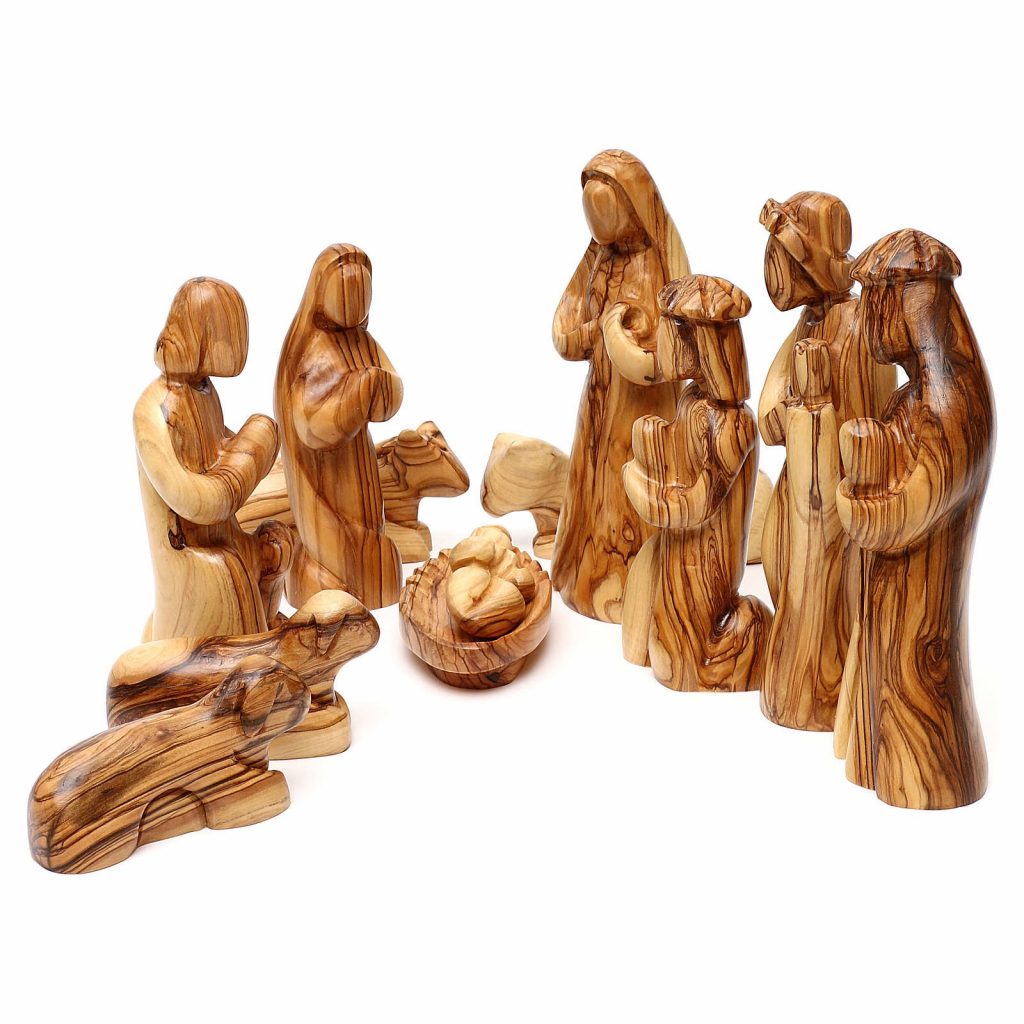
The present difficulties and challenges do not take away from our Christian understanding of the meaning of Christmas but instead increase our resolve, our resilience and our faith all of which give us hope for the future. As we go into a New Year I have invited several parishioners from our different churches to tell us in this issue a little about their hopes and dreams for the future, both for their own lives and the life of our churches. In addition Malcolm Grundy has written a very thoughtful and helpful article about Christian hope. Things do seem to be at a turning point nationally and internationally at the present and rather than be downhearted let us be encouraged. In particular 2021 could indeed be a great year in the life of the City Centre Churches!
The fun side of Christmas may not be quite the fun we have been used to but we have tried not to make this issue too serious but to include some fun articles and quizzes as you gather together with whoever you are allowed to over the Christmas feast.
On behalf of all your Clergy and Readers, I wish you a very happy and blessed Christmas and a New Year full of hope and promise of days to come.
Derek
CHRISTMAS AND EPIPHANY SERVICES – YORK CITY CENTRE CHURCHES
In the present circumstances please check with Church websites nearer to the time as there may be variations or additions.
ALL SAINTS PAVEMENT
- Online Carol Services: for links and details see www.allsaintspavement.co.uk
- Wednesday 16 December 7pm with the Freemen and Joint Guilds of the City of York
- Thursday 17 December 7pm with the Rotary Clubs of York
- Friday 18 December 7pm with the Masonic Lodges of York
- Sunday 20 December 10:30am – Parish Carol Service in Church and Online
- Christmas Day 25 December 10:30am – In Church and Online
- Sunday 27 December 10:30am – Mattins
- Sunday 3 January 10:30am – Epiphany Sung Eucharist
- Sunday 3 January 6:30pm – Epiphany Evensong
ST DENYS WALMGATE
- Christmas Eve 24 December 4pm – Carols by Candlelight, a traditional service of Nine Lessons and Carols, signed for the deaf (to be confirmed, subject to government Covid regulations at the time)
- Christmas Day 25 December 10am – Holy Communion (numbers may be limited, subject to government Covid regulations)
- Sunday 27 December 10am – Eucharist
- Sunday 3 January 10am – Epiphany Eucharist
- Nearer the time, please check for updates on notices outside church and on the church website
ST HELEN STONEGATE
- Saturday 19 December 12 noon – Eucharist with anthems, hymns & readings for Christmas in Church and later Online
- Saturday 2 January 12 noon – Epiphany Eucharist in Church
- Please see our church website for more details
ST OLAVE MARYGATE
- Christmas Eve 24 December 6pm – Join the choir and congregation of St Olaves for a special Online Nine Lessons and Carols Service in aid of Carecent York
- Christmas Eve 24 December 11:30pm – Midnight Mass in Church
- Christmas Day 25 December 9am – Eucharist in Church
- Christmas Day 25 December 10:30am – Online Eucharist
- Sunday 27 December 9am – Eucharist in Church
- Sunday 27 December 10:30am – Online Eucharist
- Sunday 3 January 9am – Epiphany Eucharist in Church
- Sunday 3 January 10:30am – Online Epiphany Eucharist
- Full details of these and other services can be found on www.stolaveschurch.org.uk
HOPE IN TROUBLED TIMES by Revd Canon Dr Malcolm Grundy
I do not wish you to remain in ignorance my brothers and sisters . . . as those who live without hope.
St Paul’s Letter to the Thessalonians, Ch 4, v13.
‘Hope springs eternal’, – easy to say but not always easy to believe. In troubled times there is a right expectation that plans should be made and that a positive attitude will help to keep spirits up. Perhaps the most well-known of all verses and chapters in the Bible is St Paul’s declaration in his first letter to the Corinthians. His chapter 13 is summed up with the three enduring traits of humankind – Faith Hope and Love.
Mother Julian of Norwich has given us the basis for a spirituality of hope with her important saying, ‘All shall be well’. We are right to ask what this would look like in any future society. Our answer is given by Jesus in his introduction to so many parables. First, he asks for repentance followed by a change of lifestyle and says, ‘The Kingdom of Heaven is like . . .’ He then gives pictures of the Kingdom with the essential qualities of love, forgiveness, reconciliation and much more.
Over the last century in our own troubled times church leaders have frequently had a part to play in commenting on current situations and re-kindling hope. In the autumn of 1916, a challenging time in the First World War, the Archbishops called the nation to a National Mission of Repentance and Hope. The Mission was launched with these telling phrases: ‘We are to repent not because we believe that we are guilty of provoking this war, but because we, together with the other nations that profess to be Christian, have failed to learn how to live together as a Christian family’.
In a rather different and more socially engaged way, in the middle of the Second World War Archbishop William Temple published one of his most influential booklets entitled Christianity and Social Order. His book outlines the contours of the Welfare State with its call for the provision of universal access to healthcare, education, decent housing, proper working conditions, and democratic representation. It was a vision of hope for a post-war society that reflected the innate dignity of each person created in the image of God. It was hugely influential on the 1942 Beveridge Report which led to the establishment of the Welfare State in 1945.
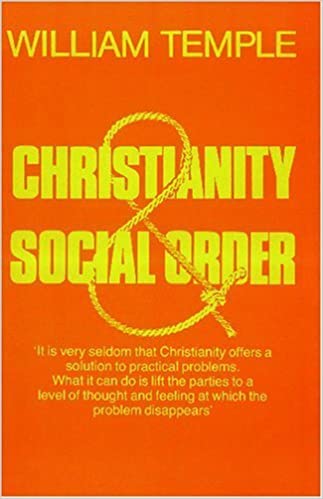
I could point also to the Faith in the City report of 1985 and Faith in the Countryside of 1990 which were also produced in times of national turmoil. Both publications were filled with stories of hope through initiatives begun by local people. Both of these initiatives taken by our churches and their leaders attracted critics and aroused controversy. I am pleased that they did, not least because each drew attention to the prophetic element in the Christian message.
One of the most influential exponents of hope remains Professor Jürgen Moltmann. He came to faith as a German prisoner of war, by reading the Psalms and New Testament while in an English Prisoner of War Camp. In his Theology of Hope published, first in 1964, he wrote about a divinely inspired dissatisfaction with the way things are now. “Those who hope in Christ can no longer put up with reality as it is, but begin to suffer under it, to contradict it. Peace with God means conflict with the world, for the goad of the promised future stabs inexorably into the flesh of every unfulfilled present.”
Such hope, he continued, “makes the Church the source of continual new impulses towards the realization of righteousness, freedom and humanity here in the light of the promised future that is to come.” Archbishop Antje Jackelén of the Church of Sweden, who studied under Moltmann at the University of Tübingen in the 1970s says, “It’s rare that you can just quote things that were written 50 years ago, the question of hope is so important for people,” she says, “The climate change challenge, the unrest in the world, the refugee situation – all these things make people ask for hope.”
To bring this all down to our local commitment to become communities of hope, most will know that St Martin’s church and congregation hold for our City Centre Churches membership of the Community of the Cross of Nails. With our Partners we are being encouraged to join a programme grounded in our theology of hope called, Journey of Hope. It is for Christians and people of all faiths to learn about peace-making, reconciliation and the building of hope-filled communities. (https://www.reconcilerstogether.co.uk)
I get a strong sense that in this pandemic, not least because media access is so available, we will share in a great range of stories and initiatives, often in everyday circumstances. Many will remind us of the centrality in all God’s creation of the concept of hope. None of these initiatives suggest a return to ‘things as they were’. They gain energy from a frustration and an ‘itch’ as Moltmann said to change things. Hope in troubled times gives the opportunity to plan how to rebuild in new and inclusive ways. It is an encouragement for us as we dream about re-opening our church buildings, welcome our new vicar and work with her in bringing hope to our communities in the centre of York.
Malcolm
CHRISTMAS QUIZ

Question: What did the other reindeer not let Rudolph do because of his shiny red nose?
Question: How many ghosts show up in A Christmas Carol?
Question: Who was the mother of the Virgin Mary?
Question: What are the traditional names of the three wise men?
Question: The movie Miracle on 34th Street is based on a real-life department store. What is it?
Question: What is the origin of the name Santa Claus?
Question: When was the first Christmas tree in Trafalgar Square donated and from which country?
Question: Who wrote the Christmas speech of King George V in 1932?
Question: What was given on the seventh day of Christmas?
Question: Elvis isn’t going to have a white Christmas he’s going to have a….
Question: What do people traditionally put on top of a Christmas tree?
Question: In Home Alone, where are the McCallisters going on vacation when they leave Kevin behind?
Question: In the classic Christmas movie, How The Grinch Stole Christmas, the Grinch was described with three words. What are they?
Question: In which modern-day country was St. Nicholas born in?
Question: In the movie It’s A Wonderful Life, what happened every time a bell rang?
Question: What words follow “Silent Night” in the song?
Question: Which Hollywood actor played six different roles in The Polar Express?
The answers will be published online here after Christmas!
NEW BEGINNINGS: HOPES AND DREAMS by Dorothy Lee, All Saints Pavement
“HOPES & DREAMS” : What exciting thoughts these two words conjure up in our minds, especially with the coming of our new Priest-in-Charge coupled with a New Year, we, the City Centre Churches, have the perfect opportunity to explore the possibilities of achieving at least some of our hope and dreams for the future.
However, these hopes and dreams cannot be achieved without a willingness on the part of all concerned to “bring to the table” their own thoughts and suggestions as to what it might be possible to accomplish for the benefit of all the Churches.
Certainly, one of my hopes for All Saints Pavement is that we can keep our beautiful lantern tower shining out in the darkness as a beacon of light (and welcome) to all.
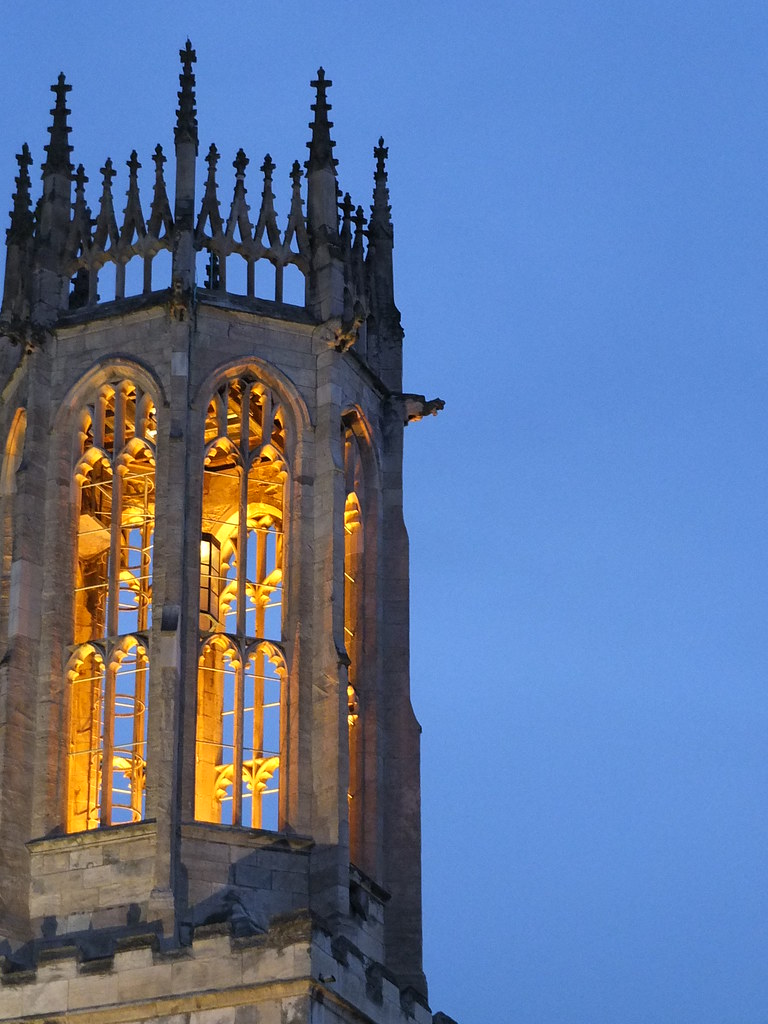
Image Source: https://www.flickr.com/photos/11561957@N06/13905493142
May we also be able to continue our tradition of keeping the church open during the day, as often as possible, so that people may find a place for quiet prayer or, simply to sit and rest a while away from the “hustle and bustle” of the city, especially during the height of the tourist season. I know this is greatly appreciated by both “locals” and visitors alike.
I am sure that, like me, everyone will have their own personal hopes and dreams for the future. Please do not lose sight of these despite the surreal times in which we find ourselves. It is always good to have something to look forward to or a goal to work towards.
Here’s to all those “HOPES AND DREAMS”!
Dorothy Lee, All Saints Pavement
SANTA WORD SEARCH
Here’s one for the children!
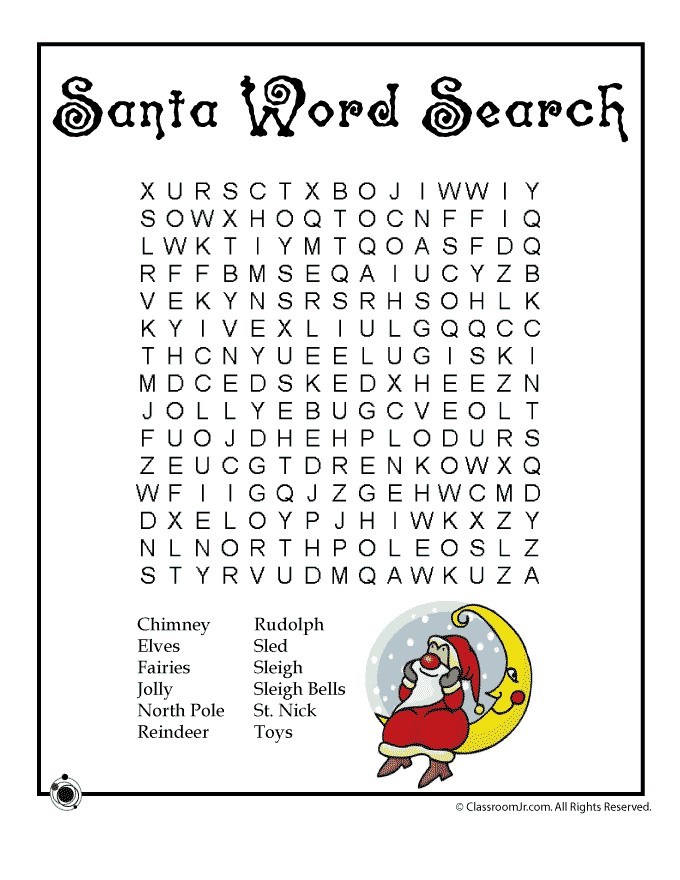
NEW BEGINNINGS: HOPES AND PRAYERS FOR 2021 by Professor Dianne Willcocks CBE, St Denys
My hopes and my prayers for 2021 are simple ones; I want it to be a good year for us all! As a proud member of St Denys community and an ‘adopted’ York person for some twenty years I take comfort and delight in our collective achievements over the recent past; and I see much that we can build on to secure a rewarding future.
We have all been learning to ‘do different’ and striving to ‘do better’ in this past strange year which has been characterised by the ever-present health threat mixed, for a significant grouping, with a threat to their livelihood and financial wellbeing; for many, this has resulted in real loss and pain. And so, habits have changed: those who can have been taking lots of long walks along the rivers and bye-ways of our beautiful city; there is a new-found appreciation of God’s glorious creation as the seasons changed before our ever-more-seeing gaze; we socialise and we pray in approved and imaginative ways; and we express a truly heartfelt appreciation of those who are giving so generously of their talent and time to help us through the challenges. In particular, we applaud the outpouring of kindness and practical care in our neighbourhoods for those who are most vulnerable; and this has reminded us of the power of love.
And so, in the coming period, I look forward with quiet confidence to a world in which ‘love thy neighbour’ sits at the heart of our ambition and our programme for renewal within the City Centre churches of York – a theme and an imperative that can unite us across diverse peoples and which will enable the Christian message to touch the wider community. And we really do have to explore that key question: “who is my neighbour?”
I would love to see the identity of each of our wonderful city churches become more clearly visible in terms of vision and mission for those we serve. The special talents and individuality of each parish community can be a source of strength and celebration locally as well as a springboard for shared endeavour across the cluster. We have magnificent buildings; committed congregations; music excellence in our choirs and our organs; storytelling and social connectivity; and so much more, alongside our dedicated patterns of worship…. I hope to see these expressions of love enjoyed by a wider audience, those who share our faith alongside those with a differing spirituality.
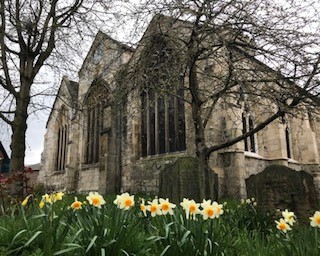
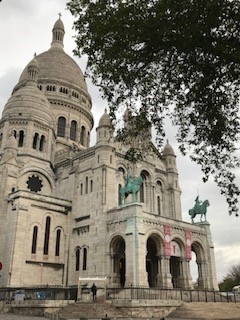
At St Denys, in-times-of-Covid, we have prayed together ‘at home’ and in church, when we were permitted, and our doors remain open; we have kept in touch via a weekly newsletter and calls plus visits to isolated individuals together with Tuesday night zoom-socials. And it is only a year ago that we undertook our acclaimed pilgrimage to the Basilica of Saint Denis in Paris. We look forward, soon, to enjoying more fully the fruits of our building fabric renewal and the still-newly-installed Henry Willis organ with regular worship and much besides.. And continuing our service to the hearing-impaired community, we will bring back our BSL-signed and popular lecture series, Stories from St Denys – opening our doors as wide as we can. And our socials will, of course, revert to mingling in the local hostelry!
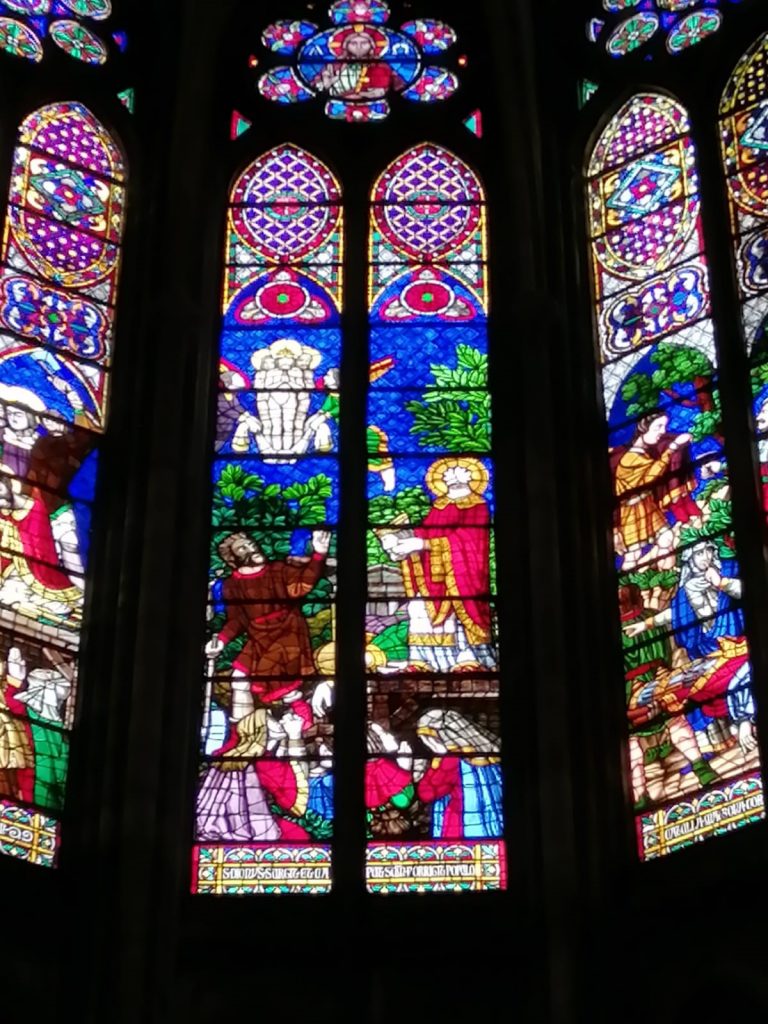
We are presently looking forward to the arrival of our new priest-in-charge and, as a church community with a reputation for friendliness and welcome, St Denys folk will be looking for ways to work with Rev Liz towards a great 2021 for us all as we learn new ways to ‘love our neighbour’.
Dianne Willcocks, St Denys
NOTES FROM ST HELEN STONEGATE by Anthony & Margaret Hammersley
It was all going so well—
Attendances at the Saturday Eucharist at St Helen were back to just over 90% of the level prior to lockdown in March.
The Choral Scholars had returned in person.
We had successfully recruited an Organ Scholar—William (Will) Campbell. Will is a first-year music student at the University of York. In his gap year he was the organ scholar at Guildford Cathedral. He is also the organ scholar at Leeds Minster but fortunately the service commitments there do not clash with ours. He is an excellent addition to the music team at St Helen.
—– and then we were placed in lockdown 2!
However at least we can start making plans for December.
Our current plan (lockdowns permitting) is: –
- Saturday 5 December: Midday Eucharist with added anthems, hymns and readings for Advent
- Saturday 12 December: Midday Eucharist followed at 1.30pm a recital of organ music for Christmas given by the St Helen organists and friends.
- Saturday 19 December: Midday Eucharist with added anthems, hymns and readings for Christmas
Full details of these events will be available on the parish website at sthelenwithstmartinyork once the details of the “release” from lockdown are known.
Armistice Day
Fortunately, we were able to commemorate the 2-minute silence on Armistice Day outside the west door to St Helen. Five members of the home team observed the silence. The commemorative words were said. 10 people joined us out in St Helen’s Square. It was good to see that most of these 10 had been sitting quietly on the various benches waiting for the 11o’clock chimes of our bells. Then they stood up and turned to face the church. St Helen is truly in the heart of the City of York.
We positioned the two war memorial desks at the west door as can be seen in the image below:
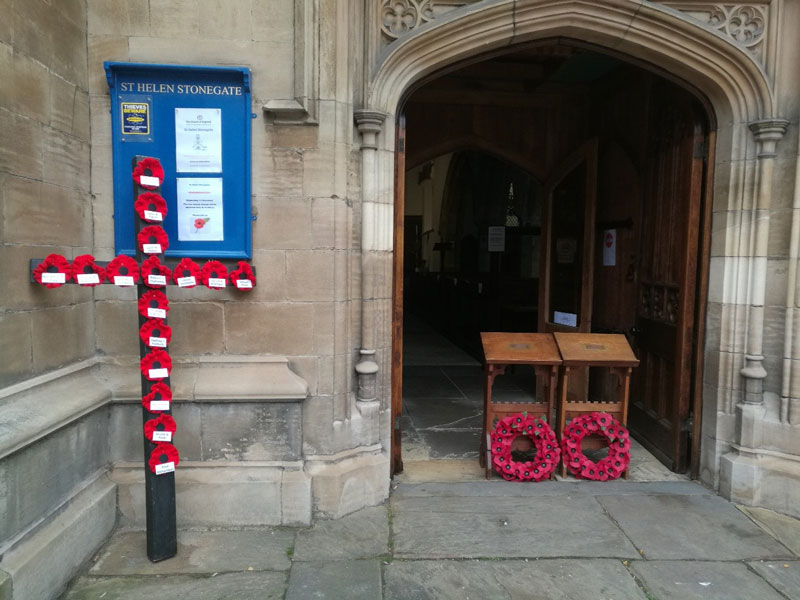
These prayer desks remember: –
- Cpl Arthur Galtress aged 21 a Royal Marine on HMS Clan McNaughton which sank with the loss of all hands off NW Scotland on 3 February 1915. He was a choirboy at St Martin. Arthur’s wife Marjorie who died in 1965 is also commemorated. Arthur’s brother Walter was a Churchwarden at St Helen.
- Cadet Tom Hanley RAF. Tom was a server at St Helen and was killed on active service on 20 October 1941
Both prayer desks are included on the Imperial War Museum’s list of war memorials.
The poppies on the cross commemorate those from the parish who were killed on active service in World War 1.
Church Railings
Finally, the observant passer-by will have seen that the railings at the front of the church have been removed. They are currently being restored by a blacksmith. We hope they will be back soon.
Anthony & Margaret Hammersley, Churchwardens
NEW BEGINNINGS: LOOKING FORWARD by Anthony & Margaret Hammersley, St Helen with St Martin
The parish has come a long way in the last 9 years. We are now at the stage where we are a gathered community which is surviving well despite the Covid-19 pandemic.
We are embarking on new beginnings in several ways. We have a new organ scholar, new members of the PCC and we have recently the new experience of recording our services to share with absent members via Facebook and our website. All four of our choral scholars have returned and despite missing a term’s experience due to lockdown are strengthening our services with joyful quality singing.
The Covid crisis has shown us to be in a good place. Services have come back in full for some months and are well supported. This time last year we were still recovering from the departure of our priest in charge and trying to visualise the future. We now look forward confidently as we continue to promote services which engender wholehearted congregational participation. We realise we have developed our own style in recent years. The PCC will seek a renewed worshipping community which will recognise the whole of the parish and exploit its central location to reach out to others.
We look forward to welcoming Rev’d Liz as our new Priest in Charge very soon and then sharing our journey with her.
Anthony & Margaret Hammersley, Churchwardens
DONG MERRILY ON HIGH! by Peter Wells
In happier days Christmas would be an explosion of Carol Concerts. Sadly, this year is different but Peter Wells, in a lighthearted article he wrote some time ago, reminds us of some of the traditional “delights” of amateur choirs that we may miss this year . He hastens to add that none of this refers to any of our Church choirs!!…
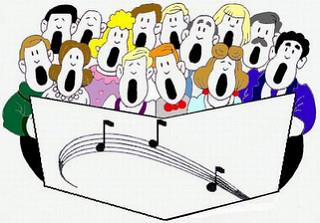
Dong Merrily on High!
A Guide to the Art of Coarse Carol Singing
This is the season of the year when people all over the country who claim they ‘don’t really sing’ dust off their tonsils and band together to outnumber audiences in village halls and chapels, in order to prove that what they said is true. It is in an attempt to improve the quality of their offerings that these hints have been compiled.
1) The Conductor
There will probably be someone waving their arms about in front of you. Ignore them. They only get the job because they can’t sing.
2) Chat Breaks
From time to time during rehearsals, the conductor [q.v.] will stop waving the baton and start talking. What the conductor says will not apply to you, and this is a good time to relax and chat with your neighbour about the weather and what you’ve been doing during the week. That’s what Coarse Choirs are about – camaraderie. Alternatively, when the baton stops moving, just carry on singing until the conductor starts jumping up and down and shouting.
3) Coming In
On no account should you start singing before anyone else does. It’s unmannerly, and you might get it wrong anyway. Wait for everyone else to start first, and don’t worry about the result. “Saw three ships” makes perfectly good sense, or at least no worse sense than what the posh choirs sing.
4) The Accompanist
You will find that accompanists usually play too quickly, and that their instrument is pitched slightly sharp. Just keep going. You can usually slow them down a bit, but you won’t be able to flatten the piano without a tuning spanner.
5) Articulation
Articulation is important. For example, in “Good King Wences” the t in “last looked out” is too often overlooked. Likewise the ‘r’ in “Hosanna rin excelsis”, whenever this phrase occurs. (“Rin” is Latin for “in”.)
6) Making Yourself Heard
If your family or friends are in the audience, it’s a good idea to sing the last note of each carol for as long as you can. Hopefully they will hear you, and tell you afterwards how good you were. In order to outlast the other singers, it is necessary to take in an enormous lungful of air before the last syllable, e.g. “Born is the King of I-Iz-Ray (breath) EEEEEEEEEEEEEEEEEELLLLL.”
7) Meaning
DO NOT try to think about the meaning of the words. Imagining the Wise Men Three entering in upon a single knee, for example, will reduce you to fits of helpless giggles. Did the Little Lord Jesus no crying make, or did He tears and smiles like us know? That’s not the point! You don’t need to know who Andy is, or why he leads his people on; just give it, as Otto Klemperer no doubt said, some welly.
8) Volume
There are two sound levels in Coarse Carol Singing. Loud, or ff, is for the bits you know. Soft, or pp, is for the bits you don’t know.
9) Singing Tenor
If you’re a man the chances are 50/50 you’re being forced to sing tenor though you’re actually, if anything, a bass/baritone. In that case, you need to know that the notes above Middle C are sung with the eyebrows.
10) Descants
Singing a descant, even if you can’t reach the notes, gives you instant street cred. That is why the descant in the second-last verse of “Come, all ye faithful” is sung by everyone.
And, finally, for those coarse singers who reach the dizzy heights of oratorio,
11) The Hallelujah Chorus.
You know that bit in the Messiah where there are four loud Hallelujahs near the end of the Hallelujah Chorus? It’s a little-known fact that Handel actually wrote five. If you have the courage to sing the fifth Hallelujah, you get a telegram from the Queen.
Happy carolling!
Peter Wells
You might like to try this Classic FM Quiz to see how well you know carols: Christmas carol quiz: How well do you know your carols? – Classic FM
NEW BEGINNINGS: HOPES AND DREAMS by John Stanton, St Olave‘s
Over the past few months, but especially during the second lockdown, I became increasingly despondent and fed-up with the situation in which we found ourselves, to the extent that I constantly wondered if there was much point to anything. November is always a difficult month, and this year has been especially so. I annually revisit that eponymous poem by Thomas Hood that ends…
No shade, no shine, no butterflies, no bees, No fruits, no flowers, no leaves, no birds, - November!
I don’t want the ‘new normal’ with which some seem to be comfortable, I want our old normal back again, and this is especially true with regard to church. The enforced closure for worship of our churches destroys our corporate life, and despite the best efforts of our clergy and the other contributors, for me the online services are just ersatz – no substitute for the true presence, body and blood of the Eucharist. Perhaps I am just not spiritual enough.
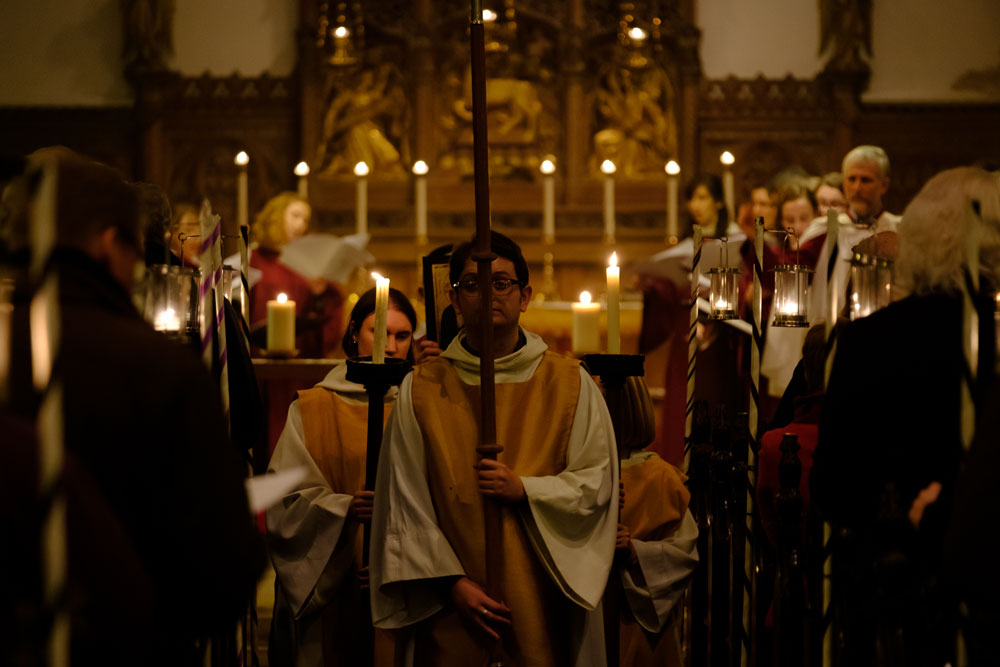
So, I long to return to a proper Sung Eucharist on Sunday mornings, which although requiring some effort, is refreshing, joyous, and spiritually nourishing. St. Olave’s with a large congregation singing hymns, our choir singing an introit, a psalm, the service setting, and an anthem, along with a full team of servers, incense, bells, vestments etc, would be so uplifting. It would be wonderful to sing again the words of hope from Revelation, (21, vv 1 – 4) set to beautiful music by Edgar Bainton –
"And God shall wipe away all tears from their eyes; and there shall be no more death, neither sorrow nor crying, neither shall there be any more pain: for the former things are passed away."
John Stanton, St Olave’s Marygate
JANUARY – LOOKING BOTH WAYS by Revd Derek Earis
It is interesting just how many of the names of our days and months are derived from pagan or pre-Christian sources. So Sunday comes from the sun and Monday from the moon etc. You can read a fascinating article about days of the week here Names of the days of the week – Wikipedia or of months of the year here Origins of the names of the months | Encyclopedia Mythica (pantheon.org)
January comes from the Roman god Janus whose image always looks both ways – so backwards to the year that is past and forwards to the year that is to come. He is the god of beginnings, gates, transitions, time, duality, doorways, passages, frames, and endings. Here is a picture:-
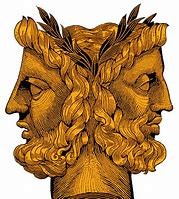
I was intrigued that if you look carefully at this image you will find that the backwards-looking Janus has mouth is open – he has something to say ( as we certainly have) about the year that is past – in our case the extraordinary year that ends on December 31st 2020. Looking forward he seems more reticent with lips tightly closed, more of a “wait and see” attitude. The future so often seems to catch us out. Who would have thought last January what an extraordinary and challenging year 2020 would be? We are perhaps wise not to make too many predictions for the future, although many of us are pinning our hopes on a vaccine to help us get back to a more normal and predictable state.
For Christians over many centuries there has been an acceptance of the uncertainties of this mortal life but also of the certainty of God. It is all summed up in the ancient Compline prayer…
“Be present, O merciful God, and protect us through the silent hours of this night, so that we who are wearied by the changes and chances of this fleeting world may repose on thy eternal changelessness; through Jesus Christ our Lord. Amen.”
This changeless God is seen in the words of the hymn “in trouble and in joy”. Unlike much of the ancient world where everything went round in circles, the Hebrew concept of time is very much that of a journey with a beginning, a middle and an end. In Christian terms this is seen as pilgrimage, a travelling with God and the whole pattern of the Christian year is built around this.
January starts with the glorious festival of The Epiphany – literally the “showing” of Christ. This year although it falls properly on 6th we observe it on Sunday 3rd. In the Orthodox Church Epiphany even overshadows Christmas. We remember the coming of the Wise Men and their gifts and what the Book of Common Prayer calls “the manifestation of Christ to the Gentiles”. Christ is shown to all the world and the season of Epiphany not only commemorates his baptism with its voice “This is my son, my beloved” on the Sunday after Epiphany but also reflects on how Christ is known in the world. It is appropriate that January also includes the feast of The Conversion of St Paul who was himself “the apostle to the Gentiles”, Gentiles being all the non-Jewish nations of the world. It is also since the latter part of the 20th century the time of the Week of Prayer for Christian Unity.
Then, this year we celebrate “The Presentation of Christ” or Candlemas on Sunday January 31st. Here again we both look backwards and forwards. Backwards to Christmas and Epiphany and forwards to Lent and Easter. So January helps us with the story of our redemption; mindful of the past we look forward in Christian hope and confidence in God for whatever the year ahead brings.
Derek
